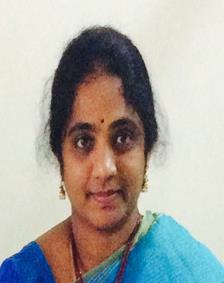Day 1 :
Keynote Forum
Jerzy Leszek
University of Wrocław Poland
Keynote: Perspectives of nanoneurotechnology for diagnosis and treatment of Alzheimer’s disease

Biography:
Jerzy Leszek is full professor of psychiatry at the Medical University in Wroclaw, Poland , vice-director of the Psychiatry Department and head of Alzheimer’s Disease Laboratory.
He is author and co-author more than 210 papers(especially from old age psychiatry), a lot of chapters to the books published in reputed Polish and international
journals and serving as an editorial board member of several journals. He is Scientific Editor and co-author of first Polish academic handbook on Alzheimer’s disease
and twenty another academic books from psychogeriatry poblished in Poland , European countries and in USA . He is member a lot of scientific associations eg. funder
and president of Lower Silesian Association of Alzheimer’s Families, first of its kind in Poland and Former Member of Board of Directions of International Psychogeriatric
Association(IPA). His Research area includes nanomaterial’s and nanotechnology in complex biochemical environment of the central nervous system.
Abstract:
Background: Nanoneurotechnology, an emerging technology of manipulating atoms and molecules at nano-scale to be able to have special and enhanced properties in terms of physical and chemical behaviors, has been demonstrating the great capabilities of developing drug carrier for overcoming blood brain barrier. Dementia of Alzheimer’s type (AD) affects memory, thinking and behavior. Scientists believe that changes in the brain may begin 10-20 years before symptoms appear and AD is diagnosed. The need to diagnose and treat the devastating disease at an early stage is critical to manage and treat AD. Unfortunately, the lack of valid biomarkers limits the possibility of the earlier stages of Alzheimer’s disease. The advance of nanotechnology could offer huge opportunities in early-stage diagnosis and well-treatment of AD.
Methods: This presentation discusses the challenges of current treatment, diagnosis of AD and development on biocompatible nanoparticles and provides the rational and potential of using nanoparticles for both drug carrier and imaging contrast agent for diagnosis and treatment of AD.
Results: Biocompatible nanoparticles with diameter in the range of 1-100 nm could be used as target delivery system for drugs e.g., rivastigmine to overcome blood brain barrier (BBB) and to minimize the side effects caused by over-dosage. In addition, biocompatible nanomaterials with enhanced optical and magnetic properties may allow them being excellent alternative contrast agents for early-stage diagnosis.
Limitations: The limit knowledge of biocompatibility of nanomaterials may inhibit the development of nanotechnology for diagnosis and treatment for AD.
Conclusion: With more studies on using nanomaterials and nanotechnology in complex biochemical environment of the central nervous system, it is most likely that nanomaterials and nanoneurotechnology can give significant impact on the early-stage diagnosis and treatment of AD. According to personal experiences, the author of this presentation discusses the application of new class of nanoparticles like dendrimers to the treatment and early diagnosis of Alzheimer’s disease.
- Recent Trends in Nanotechnology | Nanomaterials | Nanostructures | Nanomedicine | Nanodevices and Nanosensors | Materials science and Engineering
Location: Phoenix, USA

Chair
Joung-Man Park
Gyeongsang National University, Korea
Session Introduction
Miroslav VLCEK
University of Pardubice, Czech Republic
Title: Chalcogenide glasses – their micro/nanostructuring, examples of applications

Biography:
Miroslav Vlcek completed his PhD from Institute of Chemical Technology, Pardubice, Czechoslovakia in 1987. Since 1998, he has been an Associate Professor and since 2005, he has been a Professor at University of Pardubice, Czech Republic. In 2003-2004, he was working as Visiting Professor at Lehigh University, PA, USA. Presently, he is the Director of Center of Materials and Nanotechnologies at University of Pardubice. He has published more than 120 papers. His research is focused on “Photoinduced structural changes in chalcogenide glasses and application of this phenomena in fields such as photonics, diffractive optics and high resolution lithography”.
Abstract:
Chalcogenide glasses (CHGs) are very promising materials for many photonic applications due to their unique properties and functionalities. They posess for example wide IR transmission window, high non-linearity of optical properties, high refractive index and many of them are sensitive to bandgap or UV light, or electron and ion beams. In adition, their composition can be locally modified by exploiting radiation induced diffusion and dissolution of suitable metals (e.g., Ag, Zn). All these structural/compositional changes result in selective wet or dry etching which allows ChGs surface structuring on micro and/or even nanoscale. Lower rigidity and lower softening temperatures in comparison with classical oxide glasses allow their surface to be corrugated by direct laser writing method or by embossing. In this paper, we review methods of CHGs micro and nanostructuring and demonstrate applications of CHGs thin films prepared by vacuum based or solution based deposition techniques (such as spin-coating) in high-resolution UV, electron lithography and as materials for fabrication of diffractive elements for VIS and IR spectral region.
Tilahun Ayane Debele
National Taiwan University of Science and Technology, Taiwan
Title: Synthesis and characterization of bioreducible heparin-polyethyleneimine nanogels: Application as imaging-guided photosensitizer delivery vehicle in Photodynamic Therapy (PDT)

Biography:
Tilahun Ayane Debele received his BSc degree in Applied Chemistry at Ambo University and his MSc degree in Medical Biochemistry from Addis Ababa University, School of medicine, Ethiopia. He is currently a PhD student in Graduate studies of Applied Science and Technology at National Taiwan University of Science and Technology, concentrating on using nanoparticles as photosensitizer delivery in photodynamic therapy of cancer under supervision of Professor Hsieh-Chih Tsai. He has published five papers in reputed journals.
Abstract:
Herein, we synthesized and characterized novel bioreducible heparin polyethyleneimine (HPC) nanogels consisted of heparin, branched polyethyleneimine (PEI) and L-cysteine. 1H-NMR and FTIR analysis confirmed the formation of HPC nanogels while TEM and dynamic light scattering revealed uniform spherical nanoparticles with average diameter of <200 nm. Zinc phthalocyanine (ZnPC) was encapsulated via the dialysis method and the drug is released in vitro from disulfide-containing HPC nanogels in a redox-sensitive manner. Additionally, HPC nanogels possess bright blue fluorescence which eliminates the use of additional probing agent in image-guided drug delivery. Moreover, singlet oxygen detection revealed that nanogels prevented ZnPc aggregation thus enhancing 1O2 generation and photodynamic therapy (PDT) efficacy. These results showed that disulfide crosslinked HPC nanogels are promising vehicles for stimulated photosensitizer delivery in advanced PDT.
Gomaa Salma
American University in Cairo, Egypt
Title: Fabrication and characterization of antibacterial herbal drug-loaded poly-lactic acid/ cellulose acetate composite nanofibers for wound dressing applications

Biography:
Salma Fouad is an MSc holder in Nano-chemistry from American University in Cairo (AUC). She first graduated from Faculty of Science, Ain Shams University in 2010. In spring 2012, she joined the American University, as a chemistry Master student, and got her degree in fall 2015.
She worked as teaching assistant in the chemistry department, AUC, from fall 2012-till spring 2015. In 2013, she joined Zewail City for Science and Technology where she worked as both teaching assistant in the chemistry department, and research assistant in the material science department, nanotechnology center. She was awarded the University fellowship and the thesis grant from the School of Science and Engineering, AUC. Also she was awarded the graduate student of honor for her academic achievement throughout her graduate study.
Abstract:
In this study, an interactive electrospun nanofibrous scaffolds, based on two biopolymers, Polylactic acid (PLA) and Cellulose acetate (CA), was prepared.Thymoquinone (TQ), was incorporated into the electrospun fibers. TQ is the active ingredient of Nigella sativa, known for its antibacterial properties and ability to promote wound healing. The potentiality of the prepared scaffolds, as an interactive wound dressing, has been investigated including, swelling behavior, water vapor permeability and porosity. TQ- release profile was examined at the physiological pH (7.4) and temperature (37οC). The antimicrobial efficiency of the scaffolds against gram negative and gram positive bacteria were determined by the agar diffusion assay. The interaction between fibroblasts and the prepared scaffolds such as viability, proliferation, and attachment were characterized. TQ-loaded PLA: CA scaffolds showed burst TQ release after 24 h, compared with TQ-loaded PLA scaffolds, followed by a sustained release rate. The presence of CA in the scaffolds improved its hydrophilicity, and water uptake capacity. Furthermore, it created a moist environment for the wound, which can accelerate wound recovery.The TQ-loaded PLA: CA nanocomposite also showed a significant antibacterial activity against both gram positive and gram negative bacteria. Furthermore, the nanocomposite scaffolds enhanced cell proliferation and attachment, as compared to TQ-loaded PLA nanofibers. A preliminary in vivo study performed on mice skin wound models demonstrated that TQ-loaded PLA: CA (7:3) scaffolds significantly accelerated the wound healing process by promoting angiogenesis, increasing re-epithelialization and controlling granulation tissue formation. Our results suggest that TQ-loaded PLA: CA nanocomposite could be an ideal biomaterial for wound dressing.
Karina Debs
Universidade Federal de São Paulo, Brazil
Title: Hybrid material: Yeast biomass from alcohol industry impregnated with magnetite nanoparticles. The potential uses in oil spills

Biography:
Karina Bugan Debs has concluded her Under-graduate course in Chemistry at Universidade Federal de São Paulo (Brazil) in 2013. During her under-graduation, she was University Monitor for one year, worked with scientific research and also was Intern in an Environmental Company (CETESB) for one and a half year. Currently, she is enrolled in an Academic Master Program, named Science and Technology for Sustainability at the same university.
Abstract:
Oil spills are a relevant concern because they can potentially impact the whole ecosystem. Finding materials that are able to remove oil from aqueous solution and remediate oil spills is, therefore, a necessity. In this study, yeast biomass from alcohol industry and magnetite nanoparticles are combined to form a hybrid material, which has magnetic properties. The magnetite nanoparticles were synthesized by co-precipitation of FeCl2.4H2O and FeCl3.6H2O. The hybrid material and magnetite nanoparticles were characterized using XRD, FTIR, SEM and VSM; these techniques confirmed the formation of the hybrid material. The material was tested for two oil removals (motor used/new oil) at different temperatures (5°C, 25°C and 45°C). In the used oil study, the temperature did not contribute with the removal capacity. The experiments showed an excellent oil removal capacity and the results were also compared to magnetite nanoparticles itself. The removal capacity varied from 1338 to 3272 g/kg of material, being the best result obtained at 5°C by the magnetite nanoparticle. Possibly, it occurs because the nanoparticles have a higher magnetic constant than the hybrid material, getting more oil stucked by the magnetic field.
Ahmad Rafiq
King Fahd University of petroleum and Minerals, Saudi Arabia
Title: Effect of high temperature water laden environment on flexural properties of hybrid nanoclay GFRE composites
Time : 14:40-15:10

Biography:
Ahmad Rafiq has completed his MS from King Fahd University of Petroleum and Minerals, Saudi Arabia. He has published two papers in reputed journals and presented in a number of international conferences.
Abstract:
This study presents the potential of hybrid glass fiber reinforced epoxy (GFRE) clay nanocomposites as impact resistant laminated composites in high temperature water laden environment. Electrical grade-corrosion resistant (E-CR) glass fiber mats were used to prepare the hybrid GFRE nanocomposites by employing hand layup and hot pressing techniques. The nanocomposite matrix was synthesized by high shear mixing using one to five wt% loading of I.30E and immersed in water at 23°C and 80°C. A two-step water uptake behavior was observed which showed lowest weight gain for five wt% samples. Addition of nanoclay showed improvement in wateruptake resistance but reduced with subsequent clay addition due to processing difficulties at higher clay loadings as confirmed by SEM analysis. The rate of diffusion for 80°C samples was more than twice that of room temperature samples. The most reduction in flexural strength and modulus was seen for five wt% samples which reached upto 55% and 12%. The combined effect of high temperature and plasticizing effect of water caused significant decrease in flexural properties. Addition of nanoclay showed 16% improvement in flexural strength for 80°C which was the highest for 1.5 wt%.
Y Prashanthi
Mahatma Gandhi University, India
Title: Photo catalytic degradation studies of ZnO nanoparticles on Propaquizafop residues in water
Time : 15:40-16:10

Biography:
Ahmad Rafiq has completed his MS from King Fahd University of Petroleum and Minerals, Saudi Arabia. He has published two papers in reputed journals and presented in a number of international conferences.
Abstract:
This study presents the potential of hybrid glass fiber reinforced epoxy (GFRE) clay nanocomposites as impact resistant laminated composites in high temperature water laden environment. Electrical grade-corrosion resistant (E-CR) glass fiber mats were used to prepare the hybrid GFRE nanocomposites by employing hand layup and hot pressing techniques. The nanocomposite matrix was synthesized by high shear mixing using one to five wt% loading of I.30E and immersed in water at 23°C and 80°C. A two-step water uptake behavior was observed which showed lowest weight gain for five wt% samples. Addition of nanoclay showed improvement in wateruptake resistance but reduced with subsequent clay addition due to processing difficulties at higher clay loadings as confirmed by SEM analysis. The rate of diffusion for 80°C samples was more than twice that of room temperature samples. The most reduction in flexural strength and modulus was seen for five wt% samples which reached upto 55% and 12%. The combined effect of high temperature and plasticizing effect of water caused significant decrease in flexural properties. Addition of nanoclay showed 16% improvement in flexural strength for 80°C which was the highest for 1.5 wt%.
Joung-Man Park
Gyeongsang National University, Korea
Title: New sensing method of damage detection of carbon Fiber/Polypropylene composites via 2 dimensional electrical resistance mapping

Biography:
Park Joung-Man completed his PhD from Washington State University and Post-doctoral from Cornell University. He has published more than 130 papers on “Interfacial properties of composite materials and NDE”. He has been Co-Editors-in-Chief of Advanced Composite Materials and Adjunct Professor in Department of Mechanical Engineering, University of Utah since 2004. He is currently President of Korea Society of Composite Materials (KSCM) and Vice President of Korea Society of Adhesion and Interface (KSAI).
Abstract:
Carbon fibers are used as sensing elements in CFRP due to their electrical conductivity. In some more advanced studies, in CRFP, the carbon fibers were used for both strain sensing and damage sensing. The basic theory, in such studies, was that the movement of carbon fiber could be detected by ER (ER) measurement. This work evaluated the potential use of carbon fiber/polypropylene-polyamide (CF/PP-PA) composites in thermoplastic automobile applications. Two dimensional electrical resistance (2D ER) mapping was used to sense and predict damages. The extent of random dispersion of carbon fibers (CF) in PP-PA matrix was evaluated using 2D ER mapping contour charts. ER data collected at nine different positions was used to evaluate dispersion and micro-damages. The uniformity of dispersion of CF in fractured surfaces was observed for comparison. Pyrolyzed specimens were used to measure CF amount in each part and compared with 2D ER mapping. The differences in ER for tensile and compressive stresses were compared to explore their usage for real time monitoring and sensing of damages. The observation of the fractured surfaces exhibited an acceptable consistency with 2D ER results. Ultimately 2D ER mapping should be useful for evaluating and predicting damages in CF/PP-PA composites under various loading conditions. This may have some very significant practical importance. It may point the way to use quick easy tests to screen and predict other mechanical failure behaviors for composites of different materials and/or processes. Perhaps a simple 2D ER mapping test might be used to predict and select good candidate materials, surface processing techniques for various high strength composite applications.
- NanoPhysics | Environment, Health and Safety Issues | Applications of Nanotechnology | Nanotechnology in Automotive Industries
Location: Phoenix, USA

Chair
Jamal Zeinalov
Atomic Works, Canada
Session Introduction
Jose Ramirez
University of Calgary, Canada
Title: Enhancing fast settling of oil emulsions in wastewater by in situ production of iron based nanoparticles

Biography:
Jose Ramirez is current student of master in Chemical Engineering and research assistant in the Dr. Nassar Group for Nanotechnology Research at University of Calgary (Canada). He is a recognized speaker in Mexico, CEO of the Mexican company TECAM (Environmental Technologies of Mexico) and Director of Projects of the company Cplantae. Both of them are recognized companies related to wastewater treatment by the application of Nano and biotechnology. He has been recognized by the President of Mexico in 2016 due to his contributions to the care of environment.
Abstract:
Oil emulsions in wastewater treatment represent a challenging issue faced by several industries in order to achieve the environmental regulations with a minim operational cost. Oil and gas, automotive and food industries are the main ones which require cost effective processes for oily wastewater. Oil emulsions are hard to be separated especially due to surfactants interactions. Employing a nanotechnology approach, a pilot plant has been constructed in an automotive industry facility in Mexico for wastewater treatment. The process consists in the in situ iron based nanocrystals which inactivate the interactions of the surfactant between oil and water. As a consequence, a fast settling occurs. Serial separation unit operations such as settling, filtration, adsorption and microfiltration achieves a total remove of suspended solids, color and odor of the water. The constructed pilot plant allows to keep recycling the 80% of the water during engine washing processes. The produced nanoparticles were characterized by XRD, FTIR and textural properties were analyzed by BET. The crystal domain size of the particle could vary between 5 to 20 nm and it can be modified by the operation of the automatized system. Softening of the water was also reported during the physicochemical process.

Biography:
Jamal Zeinalov is a Founder of Atomic Works, a software development company specializing in simulation platforms for nanomaterials. He has over 10 years of experience in “Scientific and engineering simulation software development fields” and holds a Doctorate degree in Aerospace Engineering. His research interests include “Material characterization and properties at nanometer to micrometer scale, advancement of size and time scale of molecular simulations, development of field force potential and bond formation simulations, nanomaterial simulations for metallic, ceramic, carbon based and biochemical applications
Abstract:
Coating deposition process and the mechanics associated with substrate interactions are an increasingly important subject of research that promises to deliver a plethora of improved material properties for a wide range of applications. The surface topology of the substrate plays an important role in the boundary layer formation and the associated mechanical and thermal properties. The simulation of this process on nanometer to micrometer scale allows for a better understanding and prediction of the material composition and properties at the interface. This works examines the variability in coating/substrate interactions, compound formation rates, bond formation on nanometer to micrometer scale under variable substrate surface topology. The simulation takes advantage of hybrid multi-scale simulation methodology to produce large-scale models that maintain high fidelity at the substrate/coating interface. The simulation study has shown significant correlation between the substrate surface topology and orientation as well as deposition droplet size and incident angle during the deposition process and the mechanical properties and chemical composition of the substrate/coating interface. The study has identified the most significant topology groups and their correlation with deposition compound size and incidence angle for deposition process of metallic compounds.
Khumblani Mnqiwu
Vaal University of Technology, South Africa
Title: Copper sulfide nanoparticles from cyclohexylamine-N-dithiocarbamates ligand

Biography:
Khumblani Mnqiwu is currently pursuing his MTech in Chemistry at Vaal University of Technology. For his BTech and MTech studies, he was awarded an NRF bursary because of his excellent academic achievements in his under-graduate studies.
Abstract:
Dithiocarbamates have been the major breakthrough in the synthesis of high quality, defect free and monodispersed nanoparticles. This is possible due to their strong chelating capabilities with transition metal ions. It was reported that ligand properties of the metal complexes used as precursor could be used in the modification of the size and shapes of nanoparticles. The well passivated nanoparticles have found lot of credential in many fields for their interesting potential application in biology. In this study cyclohexylamine-N-dithiocarbamate ligand and its Cu complex [Cu(S2CNC6H12)2] were synthesized. The complex was then thermolysed in HDA and TOPO to give HDA and TOPO-capped CuS nanoparticles by varying concentration of the capping molecules. The absorption spectra showed localized surface plasmon resonances (LSPR) and quantum confinement effect for all samples. While TEM micrographs showed well dispersed isotropic particles for sample prepared in high concentration of HDA and anisotropic particles for sample prepared in low concentration of HDA. This was an opposite for samples prepared in TOPO. These particles were then tested against bacterias, gram negative and gram positive which showed enhanced activity in comparison to the complexes alone.
Lun Dai
Peking University, China
Title: Detailed optical properties of monolayer MoS2 synthesized on H-BN

Biography:
Lun Dai has completed her PhD at Peking University, China. She is Director at Institute of Condensed Matter and Material Physics, School of Physics. She has published more than 100 SCI papers, which are cited by SCI papers for more than 3500 times.
Abstract:
Monolayer MoS2 with fascinating mechanical, electrical and optical properties has generated enormous scientific curiosity and industrial interest. Hexagonal boron nitride (h-BN), an insulating isomorph of graphene with boron and nitrogen atoms occupying the two nonequivalent sub-lattices is relatively inert and expected to be free of charged surface states and dangling bonds. Moreover, h-BN possesses a smaller lattice mismatch (1.4%) with MoS2. Therefore, using h-BN as substrate may provide a possibility of investigating intrinsic properties of monolayer MoS2. In this work, we have devised and realized a high-yield and convenient method to synthesize monolayer MoS2 directly on h-BN flakes via a dual-temperature-zone atmospheric-pressure chemical vapor deposition (CVD) method. Compared with that grown on SiO2/Si substrate, the monolayer MoS2 grown on h-BN exhibits enhanced photoluminescence (PL) and Raman signals as well as the smaller intensity ratio of E2g to A1g. Besides, its A1g Raman mode exhibits clear stiffening, whereas its E2g mode exhibits a negligible shift. We have calculated the PL intensity as function of both the h-BN thickness and the PL wavelength based on light ray propagation in multilayer structure. The theoretical analysis and experimental results suggest that the improved optical property of monolayer MoS2 on h-BN results mainly from the weaker doping effect from the h-BN substrate, rather than the optical interference effect suggested previously.
Biography:
Suresh Vidyasagar is working as a Research Scholar in the Department of Metallurgical and Materials Engg at Indian Institute of Technology, Roorkee, India. His research interest includes Nanomaterials.
Abstract:
The main advantages of "Metal Matrix Nano Composites (MMNCs)" include excellent mechanical performance, good wear resistance, low creep rate, etc. The method of fabrication of MMNCs is quite a challenge, which includes processing techniques like Spark Plasma Sintering (SPS), etc. The objective of the present work is to fabricate aluminium based MMNCs with the addition of small amounts of yttrium using Spark Plasma Sintering and to evaluate their mechanical and microstructure properties. Samples of 2024 AA with yttrium ranging from 0.1% to 0.5 wt% are fabricated by Spark Plasma Sintering (SPS). The mechanical property like hardness is determined using Vickers hardness testing machine. The metallurgical characterization of the samples is evaluated by Optical Microscopy (OM), Field Emission Scanning Electron Microscopy (FE-SEM) and X-Ray Diffraction (XRD). Unreinforced 2024 AA sample is also fabricated as a benchmark to compare its properties with that of the composite developed. It is found that the yttrium addition increases the above mentioned properties to some extent and then decreases gradually when yttrium wt% increases beyond a point between 0.3 and 0.4 wt%. High density is achieved in the samples fabricated by spark plasma sintering when compared to any other fabrication route and uniform distribution of yttrium is observed.
Thapelo Mofokeng
Vaal University of Technology, South Africa
Title: Synthesis and characterization of alanine-capped water soluble zinc sulfide nanoparticles

Biography:
Thapelo Mofokeng is pursuing his Master’s degree in Department of Chemistry with concentration in Nanotechnology at Vaal University of Technology. His research interest includes “Synthesis of nanoparticles, their toxicity and application in catalysis and biological systems”. More specifically his work examines amino acid-capped metal sulfide nanoparticles and their toxicity for biological imaging.
Abstract:
Semiconductor nanoparticles have attracted considerable attention due to their size depended photophysical and photochemical properties. They possess application in various fields such as light emitting diodes, photoconductors, catalysis, optical sensors and in novel biomolecular applications like DNA detection etc. Zinc sulfide is one such material having application in various field relating to solar energy conversion and biological applications. It is well known that semiconductor nanoparticles are themselves highly unstable like fluorescent probes in biological labelling and diagnostics, hence semiconductor nanoparticles must be water-soluble. For this reason, a new direction of biological surface modification of semiconductor and metal nanoparticles with antibodies and peptides received more attention lately. In the present work, we have synthesised ÊŸ-alanine passivated ZnS nanoparticles. ÊŸ-Alanine, an amino acid, is used as a capping agent in a view to increase the dispersion ability of the nanoparticles. Herein, we report on the optical and morphological properties of ZnS nanoparticles as a function of temperature. The employed synthetic method successfully yielded water soluble ZnS nanoparticles with quasi-spherical shape morphology. Temperature varied from slightly above temperature to about 90°C. The synthesized zinc sulfide nanoparticles were characterized by UV-visible spectrophotometer, Fourier transform infrared (FTIR) spectrophotometer, transmission electron microscopy (TEM) spectrophotometer and X-ray diffraction (XRD) spectrophotometer. The prepared ZnS nanoparticles show effective photocatalytic activity towards the degradation of methylene blue dye under visible light irradiation for their probable application in waste water treatment.
- Networking
